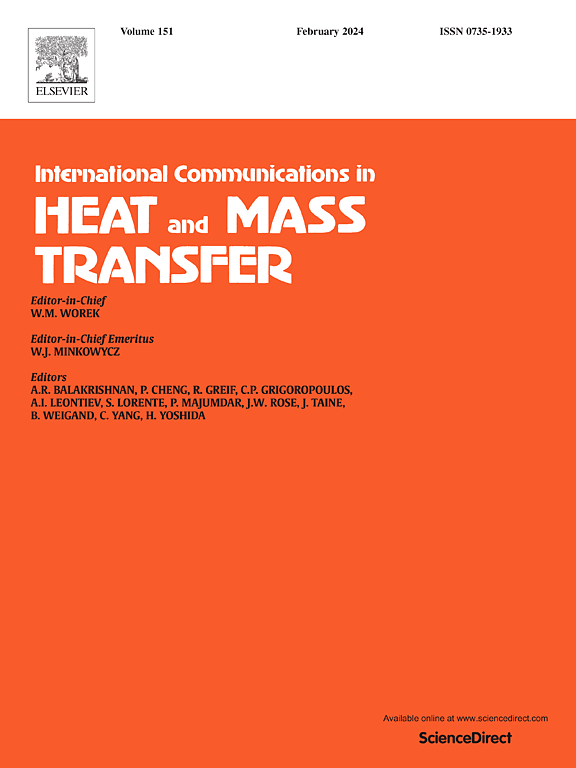在H2SO4/NH4F混合物中阳极氧化具有防冰、耐磨和自清洁性能的超疏水表面
IF 6.4
2区 工程技术
Q1 MECHANICS
International Communications in Heat and Mass Transfer
Pub Date : 2025-05-15
DOI:10.1016/j.icheatmasstransfer.2025.109071
引用次数: 0
摘要
通过阳极氧化和硬脂酸改性,在钛板上成功制备了超疏水微纳米TiO2表面。通过精确调整阳极氧化电压和时间参数,可以在TiO2表面有效地设计出各种结构,如纳米孔、突起、花状结构等。进一步研究了氧化电压和氧化时间对TiO2表面CA和SA的影响。结果表明,电压和时间对CA和SA都有显著影响,最大值可达~ 161.5°,SA接近0°。重要的是,即使在50 V下长时间氧化810分钟后,CA仍保持在154.6°。TiO2表面在极低温度(低至- 16℃)下保持特定时间的冻结状态,在室温下,它成功地恢复了其超疏水性能。此外,它还具有优异的抗结冰能力,同时具有非常低的附着力和高效的自清洁能力,以及卓越的耐磨性。本文章由计算机程序翻译,如有差异,请以英文原文为准。
Anodizing in H2SO4/NH4F mixture for superhydrophobic surfaces with anti-icing, wear-resistant, and self-cleaning properties
The superhydrophobic micro/nano TiO2 surface was successfully fabricated on a titanium plate through the processes of anodic oxidation and stearic acid modification. By precisely adjusting the parameters of anodic oxidation voltage and time, various structures such as nanopores, protrusions, and flower-like structures can be effectively engineered on the surface of TiO2. Furthermore, the impact of oxidation voltage and time on the CA and SA of the TiO2 surface was investigated. The findings demonstrate that both voltage and time exert a significant influence on the CA and SA, with a maximum value reaching ∼161.5° and a SA approaching 0°. Importantly, even after prolonged oxidation for 810 min at 50 V, the CA remains at ∼154.6°. The TiO2 surface remains in a frozen state at extremely low temperatures (as low as −16 °C) for a specific duration, and upon exposure to room temperature, it successfully restores its superhydrophobic properties. Additionally, it exhibits excellent resistance against icing formation while demonstrating remarkably low adhesion and highly effective self-cleaning capabilities, and superior wear resistance.
求助全文
通过发布文献求助,成功后即可免费获取论文全文。
去求助
来源期刊
CiteScore
11.00
自引率
10.00%
发文量
648
审稿时长
32 days
期刊介绍:
International Communications in Heat and Mass Transfer serves as a world forum for the rapid dissemination of new ideas, new measurement techniques, preliminary findings of ongoing investigations, discussions, and criticisms in the field of heat and mass transfer. Two types of manuscript will be considered for publication: communications (short reports of new work or discussions of work which has already been published) and summaries (abstracts of reports, theses or manuscripts which are too long for publication in full). Together with its companion publication, International Journal of Heat and Mass Transfer, with which it shares the same Board of Editors, this journal is read by research workers and engineers throughout the world.

 求助内容:
求助内容: 应助结果提醒方式:
应助结果提醒方式:


